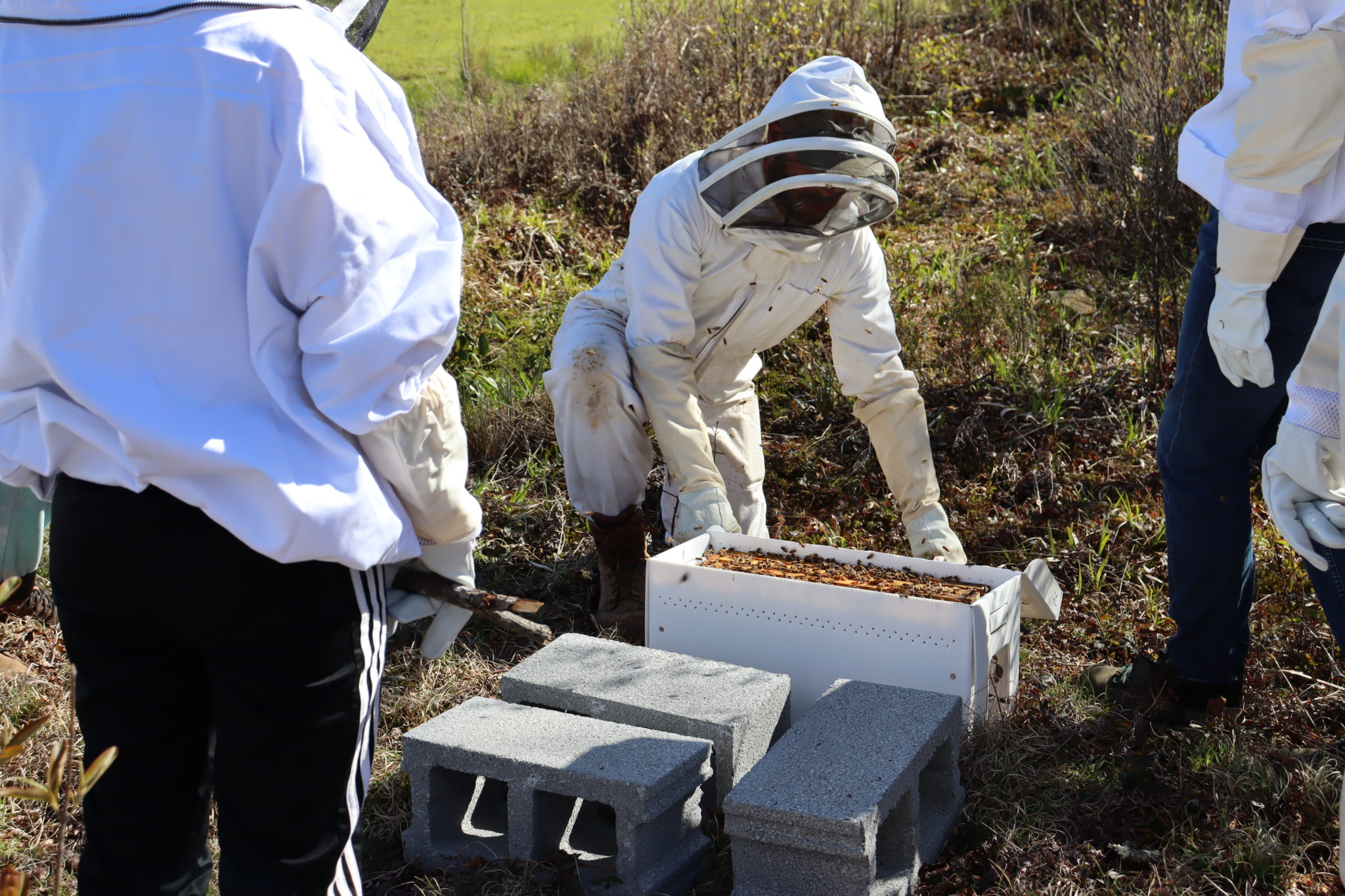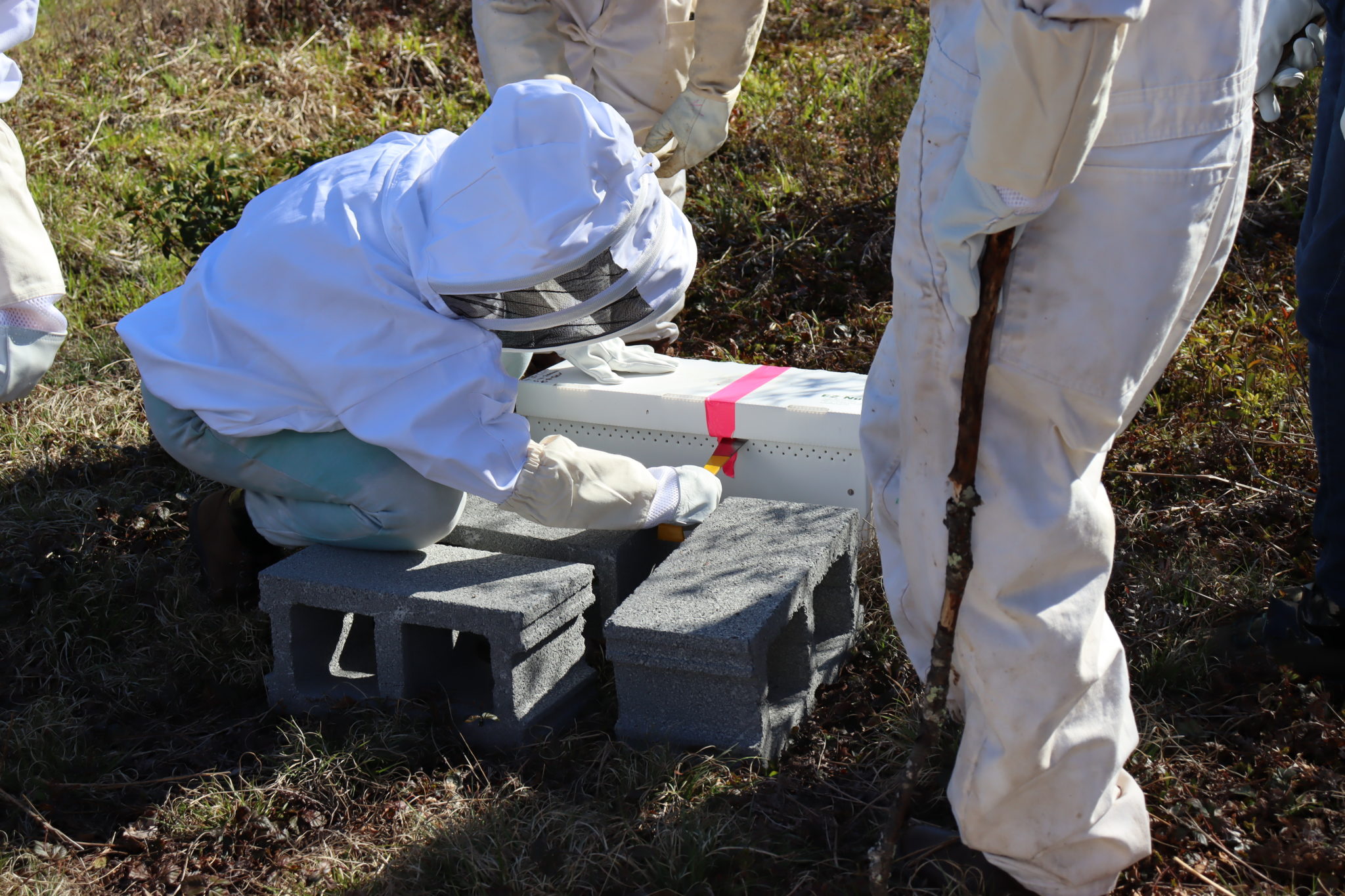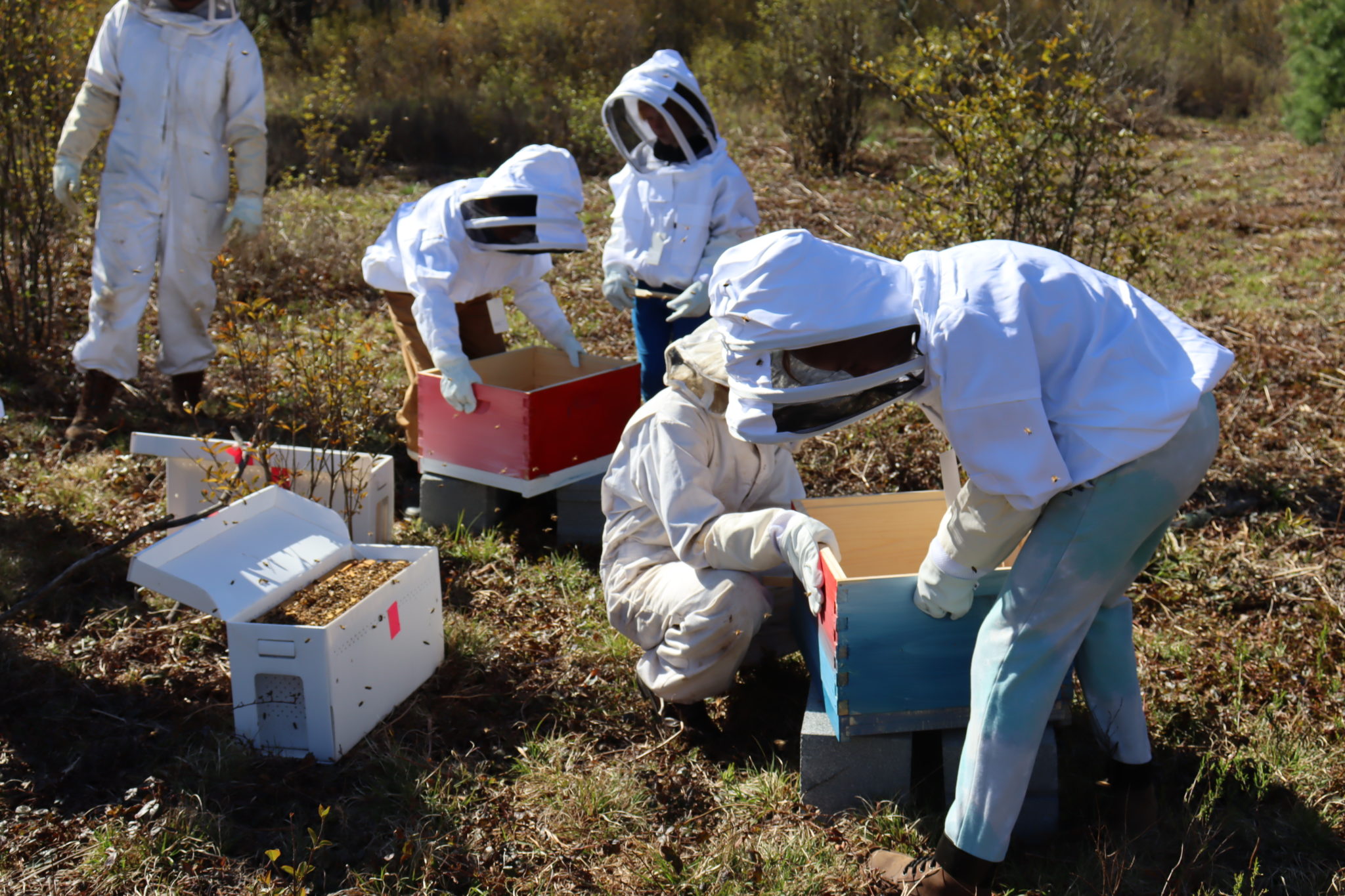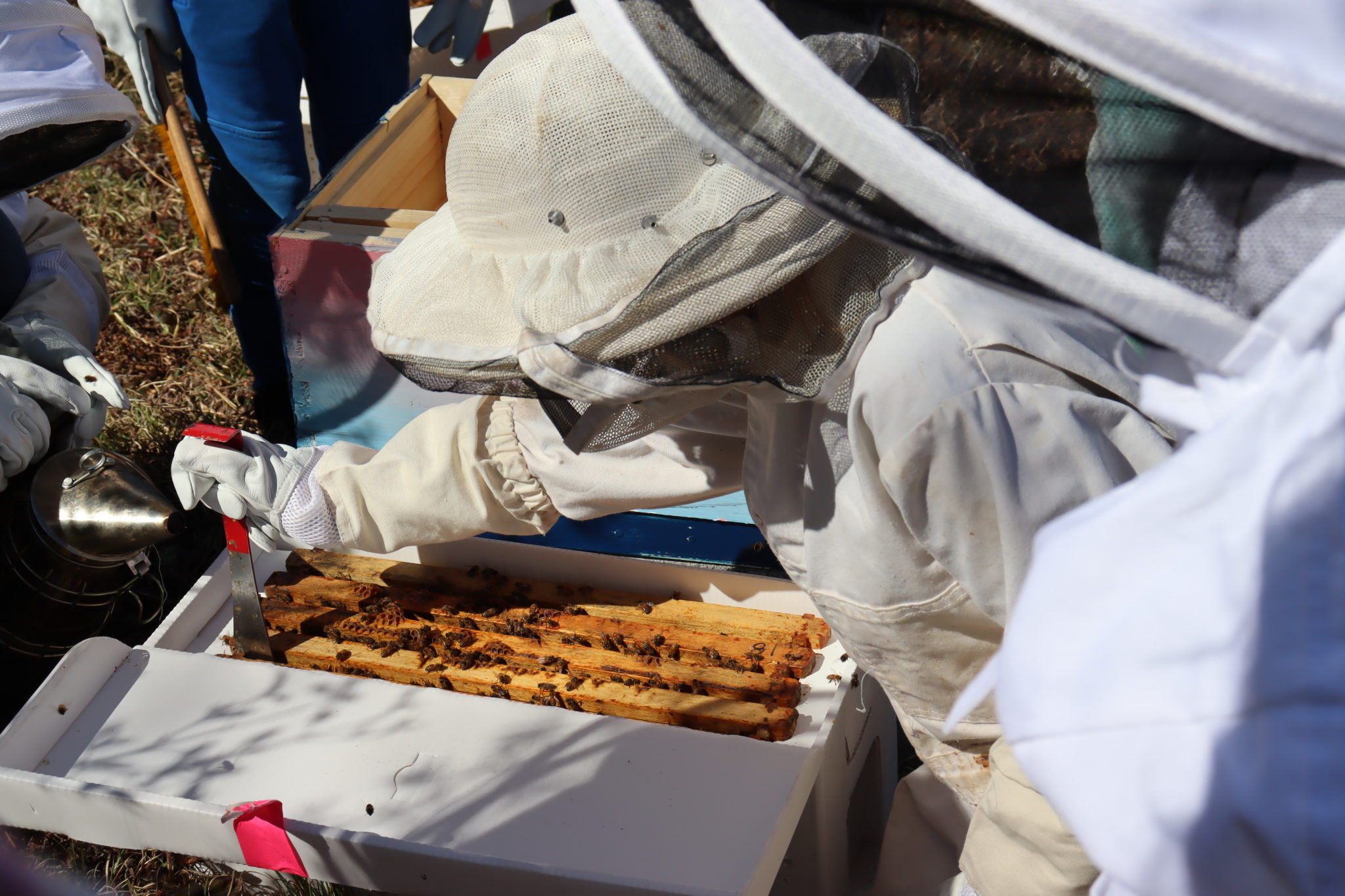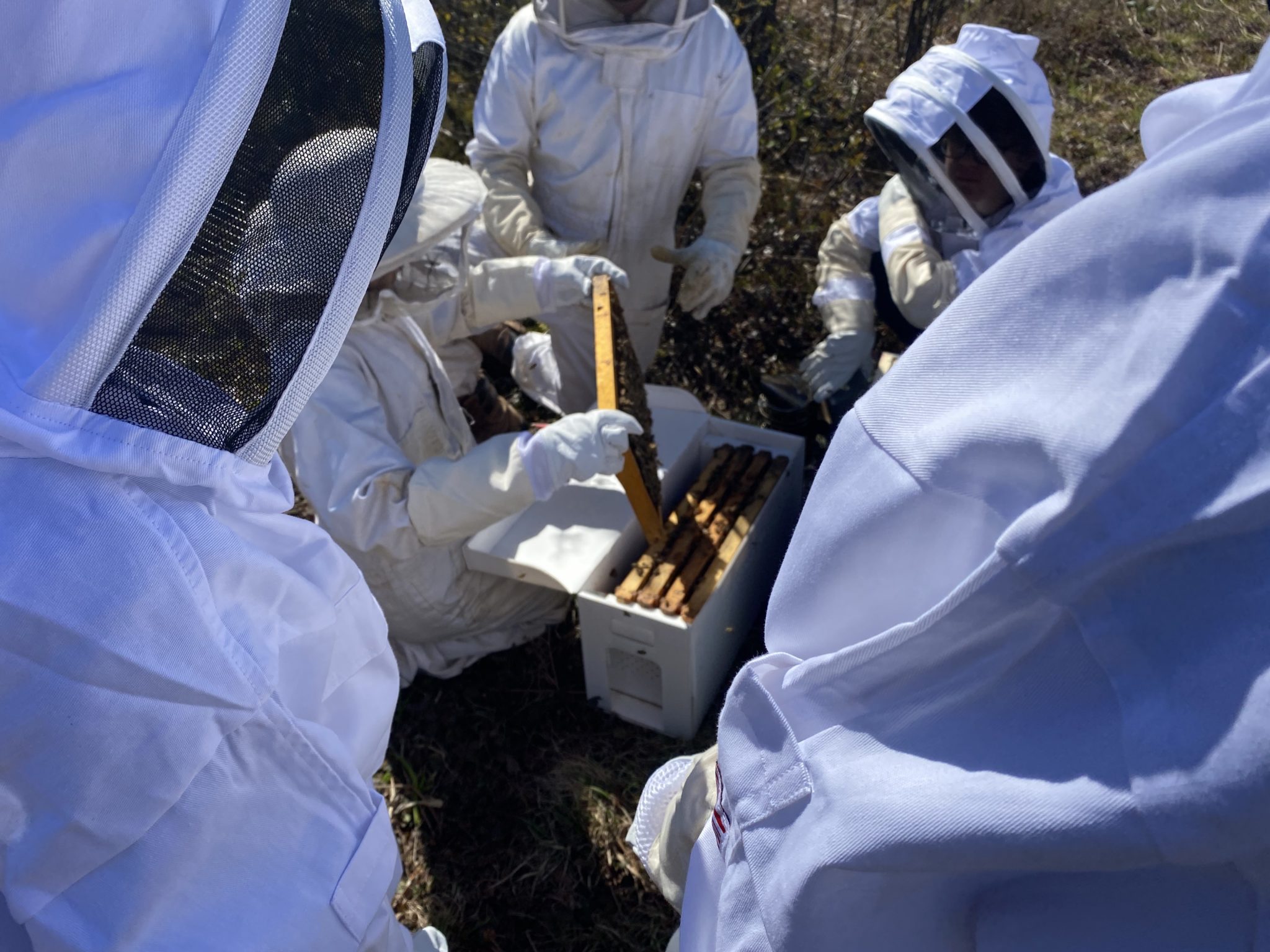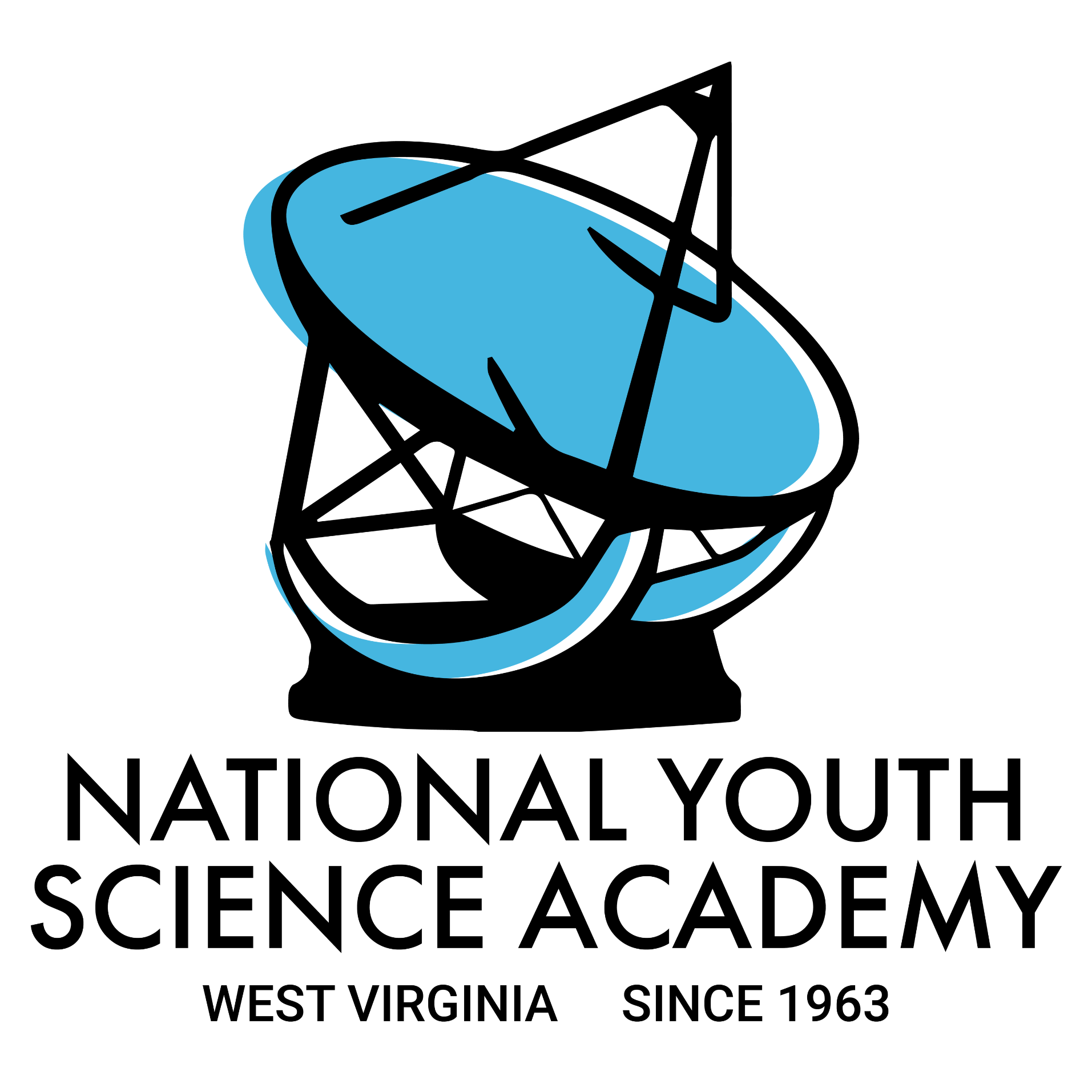The National Youth Science Center was excited to add roughly 30,000 new residents in the form of three hives of Carniolan honey bees (Apis mellifera carnica). The project was inspired by all the wonderful honey and other bee-derived products produced in the region, and the desire to provide space to keep pollinators happy and healthy in the face of pressing issues such as colony collapse disorder. The Director of WV STEM Programs Ryan Haupt reached out to Mat Cloak, an instructor at the Mountain Laurel Learning Cooperative and home beekeeper, to collaborate on the project with his students.
“As an educator and hobbyist beekeeper, I am excited about the opportunity to synthesize two of my passions! My students are thrilled about this experience so far. They are asking so many scientific questions, and they are enjoying the hands-on experience. Honeybees and pollinators are so crucial to the success of our entire environment, so this project is not only fun for us, but great for our community and world!” said Cloak about the project so far.
Last fall, Haupt placed an order for three nucleus colonies, or “nucs”, from nearby WV Wilderness Apiaries for delivery in the spring. After ordering all the other supplies to build the hives, the students got to work assembling and painting the hives to have them ready for the bees’ arrival. Once the nucs were ready, the students delivered their hives to the Center, donned their beekeeping suits and gloves, lit their bee smokers, and transferred the bees to their new homes.
“It was so great to watch the students get suited up and go from maybe a little anxious to completely fearless and fascinated by the process of carefully transitioning the bees out of the nucs and into the hives.” Haupt commented.
The students learned the different parts of the colony, from hatchery to storage areas, and how to identify the different types of bees that make the hive hum, including the sometimes elusive but essential queen bee! Thanks to the effort and hard work of the students, the bees are now enjoying living the good life near the banks of the Blackwater River. As the hives continue to develop, students will return in the fall to keep the project going and learn about collecting honey, wax, and other products, as well as how to keep the hive going over winter.
The final step of the day was to name their newly bee-christened hives. The students, appropriately enough, chose to call their three hives The Beestie Boys, The Beetles, and Queen.
